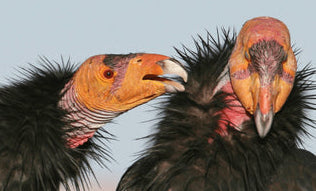
When considering the issue of sustainability and creating a more sustainable future, the focus is all too often tied directly to emissions and how they can be reduced. Oftentimes this means the only thing a company or country focuses on is reducing the amount of carbon dioxide or similar warming emissions, leaving other sustainability goals behind. Although this practice is beneficial in slowing down and mitigating climate change, sustainable development cannot and should not only focus on reduction of emissions to produce the best case results. There are many other factors that should be considered when developing sustainable practice such as human rights, livability of cities or ecological health. Factors like these help to not only save the world from climate related disasters but produce a stronger, fairer and more resilient world to live in in the future.
Ecological considerations, that is ensuring plants and animals are widespread and biodiverse to create a healthy environment, are very important in developing a sustainable planet. Ensuring biodiversity in countries around the world creates resilient ecosystems to threats like disease and preserves the beauty of the planet. Ensuring wild animals have room to live and thrive is key to this. Unfortunately, the continuous growth of human settlements, cities and populations has led to animals being pushed into smaller and smaller wild areas or forced to adapt to increasingly hostile urban environments.
Preserving safe spaces for wild animals to live is an important goal for TESUP. Unfortunately, the wind turbines provided by TESUP could pose a threat to birds living in and around residential areas in which TESUP turbines are commonly deployed. Birds are an important part of many ecosystems playing many important roles. Smaller birds such as bluebirds, swifts and warblers also known as Insectivorous birds are key to keeping insect populations in check, drastically reducing the likelihood of plagues of insects and protecting human food production by consuming 400 to 500 tonnes of insects annually.
These small birds also interact strongly with plants, acting as pollinators for some plants with brightly coloured flowers and as seed spreaders, eating seeds and spreading them away from the plant. Larger birds such as crows or even vultures act as scavengers, removing dead animals and preventing the spread of disease. Even larger birds such as owls, eagles, falcons or other predatory birds control rodent populations, preventing them from spreading diseases. With all these benefits and more that birds can provide to ecosystems as well as human populations, it makes sense to protect these populations of birds as much as possible.
Unfortunately, TESUP turbines usually sit right in the flight path of birds as this is the optimal height to harness wind energy. Although uncommon, Birds may have trouble seeing the fast moving blades and collide with them, injuring the bird. Birds being injured by wind turbines disproportionately affects certain bird species populations. For example, studies across the US and Europe have hghlighted a number of cases in which Large Eagles, California Condors and Marbled Murrelets have flown into wind turbines and been injured. This is particularly damaging as these species are endangered with particularly slow reproduction rates of only one chick per year, potentially threatening bringing these species closer to extinction.

https://abcbirds.org/blog21/wind-turbines-are-threat-to-birds/
The issue of wind turbines injuring birds is more pronounced in larger wind turbine installations such as offshore wind farms however TESUP would like to help in any way that it can! At the moment, TESUP turbine blades are single block shades of either white for vertical axis turbines or black for horizontal axis turbines. TESUP is looking to change this by adding a splash of colour to its wind turbine blades to make them more visible to birds. The vision of a bird is one of its strongest and most acute senses, however it does pick up some colours better than others.
Birds have an ability to see light within the ultraviolet spectrum of light, something not possible with human eyes. They are also equipped with special ‘cones’ , a cell that senses light waves in all animals’ eyes. These cones contain an extra drop of oil compared to human eyes which filters out certain colours, allowing them to see high contrast between colours. For this reason TESUP is trialling the addition of bright purple accent tips to the ends of wind turbine blades. An example of this can be seen below applied to the edges of the blades of the Magnum 5 and Master X turbines.
https://www.thespruce.com/how-birds-see-color-386467
https://digitalcommons.unl.edu/cgi/viewcontent.cgi?article=2908&context=icwdm_usdanwrc

Looking at the Master X turbine in particular, the relatively small radius of wind turbine blades used reduces the area into which a passing bird could fly, reducing the risk to local bird populations. The body of the wind turbine is painted white which is also beneficial to bird safety. White is perceived as a colour of danger, alarm and agressiveness to birds. This is because the colour occurs in nature as part of the plumage of many birds to warn other birds away, with the white feathers usually shown as part of a threatening or aggressive display.
But don’t worry! Adding a little bit of white in the form of a wind turbine installation will not drive all the birds away from your garden, only away from the turbine itself. To encourage birds to use your garden and encourage a healthy ecosystem in your local environment you can introduce colourful plant species to your garden to provide food and shelter to local birds, put up a bird box to provide a shelter for the birds or install a bird feeder, preferably painted bright colours to attract birds!
https://www.thespruce.com/colors-that-attract-birds-386400
TESUP really stresses the importance of a fully sustainable development of the world and considers many factors of sustainability, not just the emission reductions TESUP renewable energy generation provides. TESUP is looking forward to implementing this step of painting its turbines to hopefully make a positive impact!
